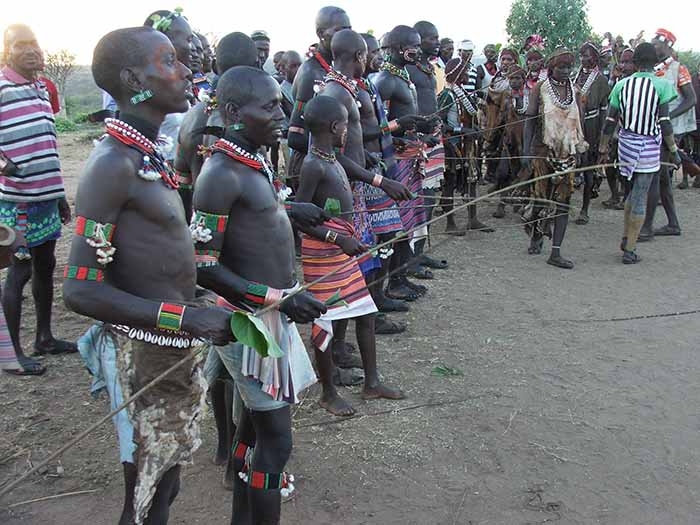
First grammar of Hamar reveals unique language system
Linguist Sara Petrollino has written the first detailed grammar of Hamar, a language spoken in south-west Ethiopia that has some unique characteristics. PhD defence 10 November.
Unique gender system
Petrollino discovered a unique characteristic that distinguishes Hamar from all other known languages. The gender system for nouns in Hamar is highly complex. In most languages a noun is masculine, feminine or neuter. Take French, for example, where la table (table) is feminine, or German where der Baum (tree) is masculine. Petrollino discovered that in Hamar every noun can be both feminine and masculine, a phenomenon that according to renowned linguist Greville Corbett was not possible.
'Small' is masculine
Masculine or feminine genders are, of course, not assigned randomly in Hamar. One of the uses of gender is to indicate the size of an object. A large, imposing building is assigned feminine gender, while a small, unimpressive one is given a masculine inflection. Another example: if a storyteller wants to place extra emphasis on a particular element in his or her text, a masculine inflection is a good device to achieve that.
Precise location
In her dissertation Petrollino also describes a unique and diverse system in the Hamar language for indicating the distance to an object. Whereas in Dutch this is limited to the difference between close by (this book) and further away (that book), it is possible in Hamar to also indicate whether an object is, for example, higher or lower or at the same level as the speaker. 'The environment where Hamar is spoken is very mountainous, so it can be useful to describe the location of an object as precisely as possible,' Petrollino explains.

Continued existence
Hamar is spoken in the south-west of Ethiopia, and the shepherds of the Hamar community live in the Lower Omo Valley, a region that is on the UNESCO World Heritage list. The language is spoken by some 46,500 people, enough according to UNESCO to keep Hamar alive. Nonetheless, Petrollino is concerned about the continued existence of the language. 'The community and its way of life are currently under pressure, which could lead to changes in language use. The construction of a large dam in the Omo River had an enormous social impact, and the government there also wants to turn the Omo Vally into one huge sugarbeet plantation.'
Isolated
To conduct her research Petrollino spend ten months in the Hamar community, where she was warmly received. She thinks it unlikely that her dissertation will be read by many people in the comunity: 'Most people live in complete isolation; in some cases they don't know they are living in a country called Ethiopia, or that the continent of Africa even exists. But there is also a small group of educated Hamar who recognise the importance of my work.'
